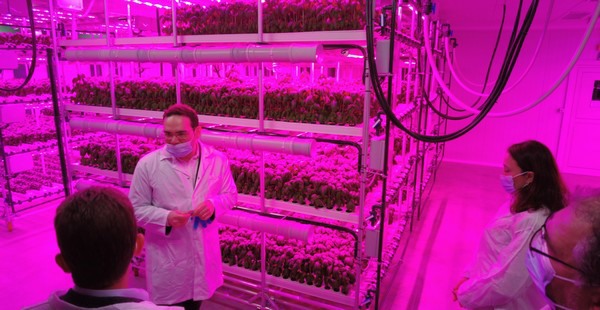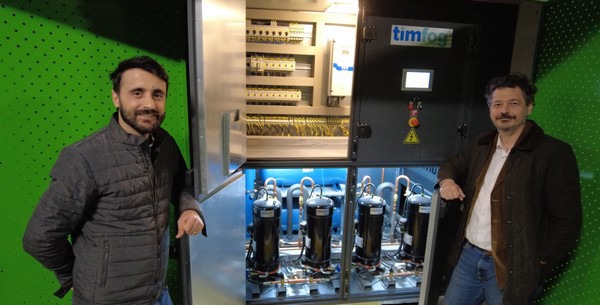Vertical farms are historically built close to consumers, on the one hand, to address food security and a steadier supply chain, on the other hand, to cut down on transportation costs, considering the usually razor-thin margins of such operations. The company Plant Factory has pushed this one step further, with the help of Turkish company Timfog, with the installation of a vertical farm in the basement of the parking lot of a shopping mall. “Real estate is really expensive in Istanbul,” says Can Külekçioğlu from Timfog. “So, as opposed to North American malls, malls located in Turkish cities must have underground car parks to accommodate incoming shoppers.” The shopping mall where this vertical farm is located has a very specific target demographic that kind of overlaps with the target of vertical farm products. “This vertical farm is located in one of the Top Tier shopping malls on the European Side of Istanbul. This shopping mall is famous because it houses top global fashion brands, jewelry – you name it, they have it. So, the demography of the shoppers is spot on for vertical farm products.”
Just like in the space
Of all the things that make this project unique, the GAHU certainly is one of the most striking. “Our Greenhouse Air Handling Unit (GAHU) is working as a Life Support System in a spaceship,” Can explains. “That’s because the outside conditions are totally alien to the living and happily growing plants inside. Our GAHU works according to the set VPD.”

To better explain the concept behind GAHU, Can says to think of Turkish baths and Turkish kebabs. “Can you eat a Turkish kebab in a Turkish bath? That’s right, no. With our GAHU, plants don’t feel like they’re in a Turkish bath, and they can enjoy the excellent food they’re given and grow feeling relaxed.” Kebabs and baths aside, the point is to look at things holistically, Can says. “You should work closely with your customer to achieve the right conditions and be flexible with the right amount of capacity to follow plants’ ever-changing needs.” To achieve that, everything on the farm is automated. “It must be automated to ensure the grower meets the demands of restaurants. The same product, the same weight, the same color and taste, every day. Initially, the farm was mainly focusing on leafy greens, but they have currently added more crops such as Pak Choi and Kale.”
Timfog is certainly not new to the vertical farming game, and Can says it’s possible to replicate such a project in any location, potentially. “Any size, any location. There’s a but, though,” he points out. “Every project is unique in its own right. The big but here is the feasibility of the project in question. Yet, if you focus on the market first, if you know what to sell, to whom, and in which quantity, then it can hardly go wrong.”

Keeping the momentum
The next vertical farming project in line for Timfog is with Plant Factory. “They are one of our main customers,” says Can. “They are planning to keep on investing in this space. We’ll certainly see more vertical farms coming online in 2024 and beyond.” The Middle East is one of the main regions that come to mind when one thinks of more vertical farms being set up, especially because of the favorable market conditions. “There sure is potential there because of the harsh climate of the Middle East. I believe the more extreme the climate is, the more sense it makes to have vertical farms.” Yet, it’s not all sunshine and rainbow necessarily. “Obviously, it all will mostly depend on investment opportunities and the ease of initiatives,” Can observes. “They all circle back to the municipal or the governmental strategies/ In today’s world, anything is possible with the technology we have, but economics is king, as is the customer.”
That means that Can and Timfog will continue focusing on their current project and regions for the remainder of 2023, at least. “We first need to get the hard data in our hands and must do our homework to create the next wave of machines. 2024 and onwards, we may start marketing this solution as well and start knocking on some doors elsewhere.”

